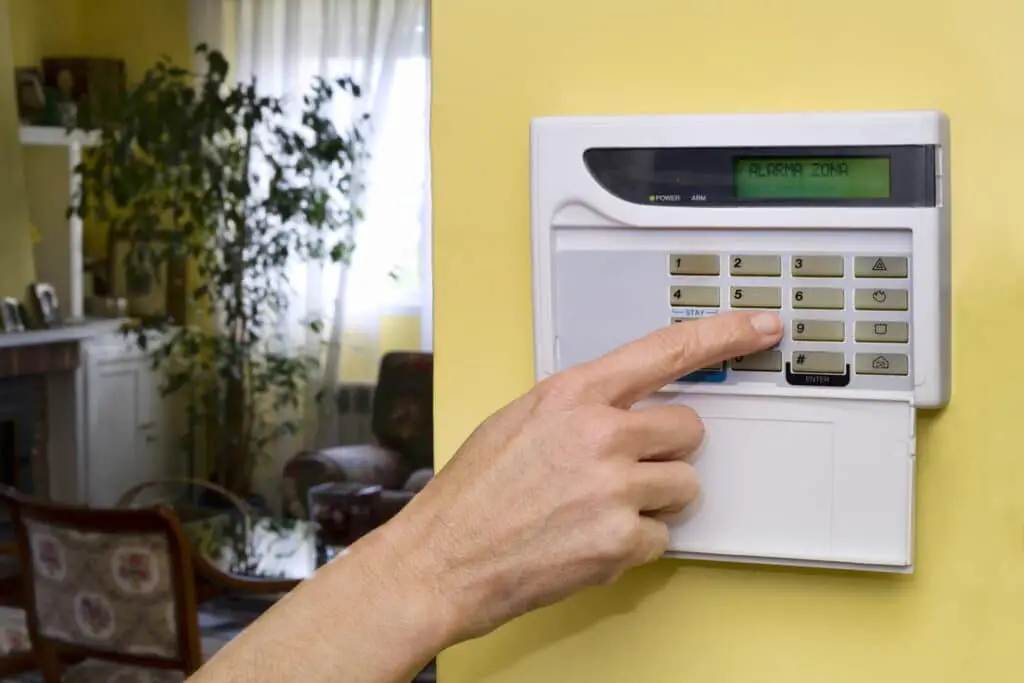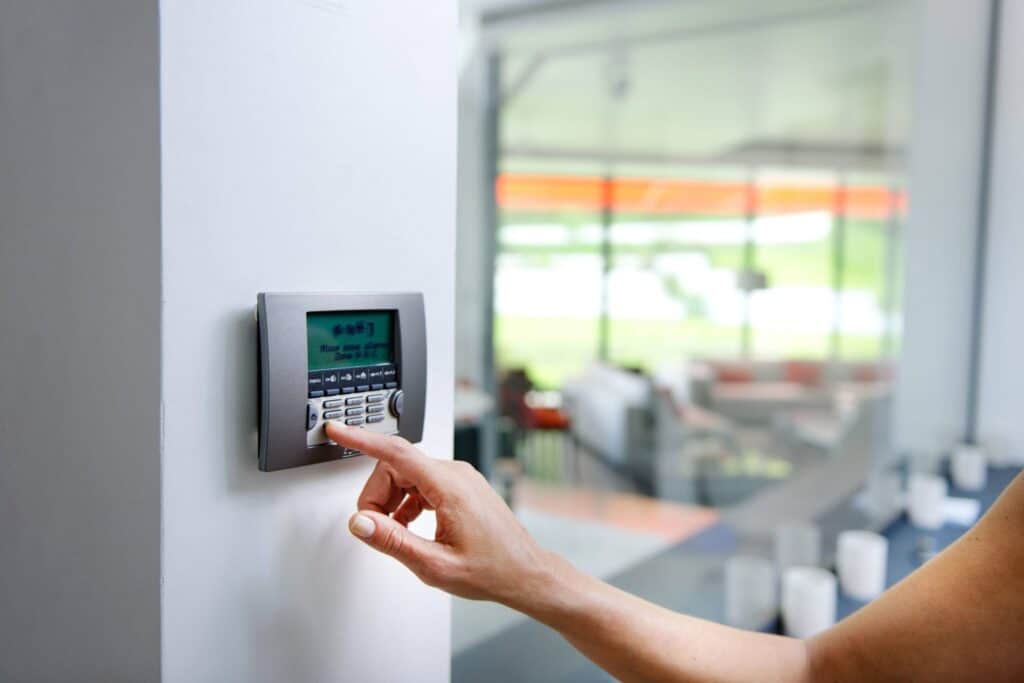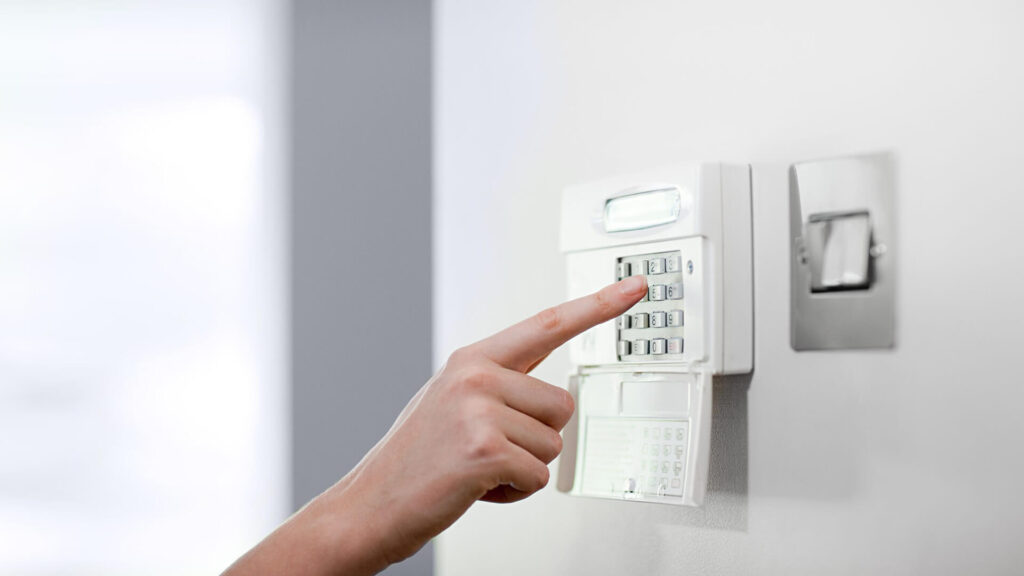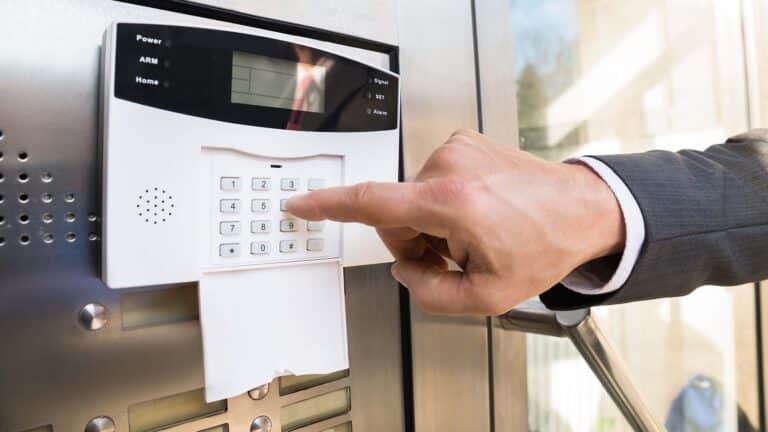Introduction
A burglar alarm is a security system designed to detect and deter unauthorized entry into a building or property. It is a crucial component in safeguarding homes, businesses, and other establishments from potential intruders. Burglar alarms have become increasingly popular due to the rising concerns regarding property theft, burglary, and personal safety. The primary function of a burglar alarm is to detect any unauthorized entry and emit a loud sound or trigger a notification to alert the property owner or a security monitoring service. This early warning system serves as a deterrent to potential burglars and provides peace of mind to occupants.
Modern burglar alarm systems utilize advanced technology to enhance their effectiveness. They consist of various components such as sensors, control panels, keypads, and alarms. Carefully placed sensors throughout the structure detect motion, air pressure, and door and window openings. Sensors instruct the control panel to sound the alarm.
In addition to the audible alarm, many burglar alarm systems are integrated with home automation and monitoring systems. These systems allow homeowners to remotely control and monitor their security system using smartphones or other devices. Some advanced burglar alarms are capable of integrating with surveillance cameras, smoke detectors, and fire alarm systems, providing a comprehensive security solution.

What is the burglar alarm system?
A burglar alarm system consists of a series of electrical components that are connected to a property. Via sensors and contacts, they detect movement or the opening of doors and windows, upon which a loud alarm is produced to alert those nearby of the unauthorised entry.
Security systems like burglar alarms detect and deter unlawful entrance. A complex network of devices and components prevents burglaries and break-ins. Sensors, control panels, keypads, and alarms comprise a burglar alarm system. Strategically installed sensors detect unexpected activity and movement across the property. These sensors include door/window, motion, glass break, and pressure sensors.
Active sensors alert the control panel, the system’s brain. The control panel checks sensor data for intrusion. The control panel initiates the alarm, which may be a loud siren, flashing lights, or monitoring service notice, after an intrusion.
The alarm deters criminals and warns surrounding residents. Modern burglar alarms have many functionalities. Video monitoring and recording are possible with surveillance cameras. Some security systems allow homeowners to monitor and manage their system from anywhere via mobile apps.
Why use a burglar alarm?
Protect your home from theft.
By installing a burglar alarm it means that if an intruder is detected, motion sensors will be triggered and an alarm will sound to notify yourself and/or neighbours that there has been a break-in to your property.
Using a burglar alarm is crucial for several reasons. Here are some compelling reasons why individuals and businesses should invest in a burglar alarm system:
Deterrence
A burglar alarm alone can prevent burglars. Knowing a house has an alarm system raises risk and minimizes break-ins. Property without visible security is more likely to be burglarized.
Early Warning
A burglar alarm system provides early warning by detecting and alerting occupants or monitoring services to potential intrusions. The loud siren or alarm, along with flashing lights, immediately notifies individuals in the vicinity, prompting them to take necessary actions or seek help.
Protection of Valuables
A burglar alarm safeguards valuable possessions and assets. It discourages burglars from attempting theft and helps minimize property damage. Quick response times can also increase the chances of apprehending intruders and recovering stolen items.
Peace of Mind
Homeowners and business owners feel secure with a burglar alarm system. It allows them to feel secure, even when they are away from the premises. This sense of security contributes to overall well-being and reduces anxiety related to property safety.
Integration with Other Systems
Fire detection and surveillance cameras can be linked with burglar alarms. Integration boosts security and provides property monitoring and protection.
Potential Insurance Benefits
Many insurers give discounts for burglar alarms. Because alarm systems prevent theft and property damage, insurance claims are less likely.
Which sensor is used for burglar alarms?
Infrared (IR) Security Sensors
Infrared sensors utilize infrared light to detect motion. In a security system, that motion triggers an alarm, turns on lights, or sends an alert. There are, however, two different types of infrared sensors commonly used in security devices ― active and passive infrared sensors.
Many sensors detect unauthorized access and sound the alarm in burglar alarm systems. Sensors are carefully positioned throughout the building to detect various actions. The following burglar alarm sensors are common:
Door/Window Sensors
These sensors detect door and window openings and tampering. They create a magnetic field with a magnet and switch. When the door or window opens, the magnet and switch separate, setting off the alarm.
Motion Sensors
Sensors detect movement in a specific region. They detect heat or movement with infrared or microwave sensors. Motion sensors alert control panel to alarm.
Glass Break Sensors
Shattered glass causes sound and vibration, which glass break sensors detect. These devices near windows and doors can distinguish between regular sounds and glass breaking frequencies.
Pressure Sensors
Stepping on pressure sensors on floors, mats, or carpets activates them. They can detect movement in halls and entryways.
Shock/Vibration Sensors
These sensors are sensitive to vibrations or impacts caused by someone attempting to force entry through doors or windows. They detect the vibrations and trigger the alarm.
Do burglar alarms stop?
Noise Control Advice – Burglar Alarms
An automatic cut-off device should stop alarms after 20 minutes. Cut-out devices can be added to older alarms, although most modern ones already have them.
Burglar alarms don’t “stop” working. Continuously operating burglar alarm systems prevent unlawful entrance and burglaries. In some cases, a burglar alarm may “stop” temporarily:
Alarm Activation
An alarm will sound for a set time after an allowed entry or false alarm. Once this duration elapses, the alarm will automatically reset itself. This temporary silence can give the impression that the alarm has stopped, but it is only a brief pause before it becomes active again.
Power Outages
Burglar alarms may lose power during a blackout. Battery backups are used by most alarm systems during power outages. These backup power systems keep alarms running until the main power source returns.
System Malfunctions or Maintenance
Burglar alarms might malfunction or need repair. Disable alarms for maintenance or changes. These episodes should be brief and uncommon.
How are burglar alarms made?
A burglar alarm system is made up of different electrical components like motion detectors, window sensors, and door sensors. These devices can detect movement and are triggered when a circuitry in the alarm breaks. One example is a window sensor which is comprised of a reed switch and a magnet.
Security or intruder alarms are complex systems that safeguard homes, businesses, and other assets from unlawful intrusion. The process of making burglar alarms involves several key components and steps.
The first step in manufacturing burglar alarms is designing the system. Engineers and technicians analyze the security requirements and develop a blueprint for the alarm system, considering factors such as the size of the property, the level of protection needed, and any specific customer preferences.
Post-design burglar alarm components are ordered. Motion detectors, door/window sensors, glass break detectors, control panels, keypads, sirens, and communication devices are typical components. Specialised manufacturers make these parts to industry norms and specifications.
Assembly is the next stage, where skilled technicians put together the various components to create the burglar alarm system. This involves connecting the sensors to the control panel, configuring the settings, and integrating any additional features or accessories requested by the customer, such as CCTV cameras or remote monitoring capabilities.
How do wireless burglar alarms work?
Wireless burglar alarms work similarly to wired ones, but the sensors communicate with the control panel via a radio frequency. The control panel may then communicate with you or the security company by either a wired or wireless connection – often WiFi, Bluetooth or a cellular signal.
Wireless burglar alarms, also known as wireless security systems, utilize radio frequency (RF) technology to communicate between the various components of the system. Unlike traditional wired alarm systems that require physical connections, wireless alarms offer flexibility and ease of installation.
The main components of a wireless burglar alarm system include sensors, control panel, and a central monitoring station (optional). Motion detectors and door/window sensors have wireless transmitters that alert the control panel of intrusions. The system’s brain, the control panel, processes these signals.
When a sensor detects an unauthorized entry or motion, it sends a wireless signal to the control panel, which activates the alarm. The control panel may feature a built-in siren or connect to external alert devices. Some wireless alarms also have the ability to send notifications or alerts to the property owner’s smartphone or a central monitoring station.

Do burglar alarms flash?
When the alarm is activated, a strobe flashes constantly as the siren blares out. The siren will last for about 20 minutes. But the strobe continues to flash so, if you come home, you know that the burglar alarm has gone off. This allows you to take precautions before you enter the building.
Yes, burglar alarms often incorporate flashing lights as a visual deterrent and indicator of alarm activation. The flashing lights serve multiple purposes in enhancing the effectiveness of the alarm system.
One of the primary reasons for including flashing lights in burglar alarms is to draw attention to the premises. Alarms trigger flashing lights to alert surrounding neighbors of an incursion. This visibility can prompt passersby or neighbors to take notice and potentially report the situation to the authorities. The presence of flashing lights can also discourage potential intruders from attempting to enter the property, as the increased visibility increases the risk of detection and apprehension.
The flashing lights on burglar alarms help identify the specific location of the alarm activation. Illuminating the alarm trigger area helps security and law enforcement find the source of the disturbance. This aids scenario assessment and action.
How long do burglar alarms last?
Although there is some variation in battery longevity, most batteries in alarm systems today will last somewhere between three and five years.
The lifespan of a burglar alarm system can vary depending on several factors, including the quality of the components, regular maintenance, and technological advancements. On average, a well-maintained burglar alarm can last anywhere between 10 to 20 years.
The control panel, which serves as the central processing unit of the system, typically has a longer lifespan compared to other components. With proper care and maintenance, a control panel can last around 15 to 20 years. However, technological advancements and evolving security needs may prompt homeowners or businesses to upgrade their control panels sooner.
The lifespan of sensors, such as motion detectors or door/window sensors, can range from 5 to 10 years. These components are subject to wear and tear over time, and their reliability may decrease as they age. Regular testing and battery replacement can help extend their lifespan.
Other factors that can impact the longevity of a burglar alarm system include the quality of installation and the environment in which it operates. Poor installation or exposure to extreme temperatures, humidity, or other environmental factors may affect the performance and lifespan of the system. To ensure the optimal lifespan of a burglar alarm system, regular maintenance and periodic inspections are crucial. This includes testing the sensors, checking battery levels, updating firmware/software, and addressing any issues or malfunctions promptly.
Do burglar alarms have cameras?
Key Features of a Burglar Alarm
It gives you real-time alerts via loud sirens or phone calls or app alerts. The camera sensors are capable of capturing and sending photos and videos to you.
Burglar alarms and security systems can include cameras as part of their overall setup, but it’s important to note that not all burglar alarms have cameras. The inclusion of cameras in a burglar alarm system depends on the specific needs and preferences of the property owner.
Cameras offer security by recording and observing. You can strategically install them around the property to monitor entrances, vital places, and vulnerable points. Investigators can use camera footage to prove a break-in or suspicious activity.
CCTV security systems have cameras. These wired or wireless systems may have night vision, motion detection, and mobile or computer remote monitoring. Video proof deters intruders, making burglar alarm systems more effective.

Conclusion
A burglar alarm is an essential security system that provides protection against unauthorized entry and theft. Its primary purpose is to detect and deter burglars, alerting property owners or monitoring services to potential threats. With the increasing concerns surrounding property crime, having a reliable burglar alarm system has become crucial for homeowners, businesses, and other establishments. The advancements in technology have revolutionized burglar alarm systems, making them more efficient and user-friendly.
Today’s burglar alarms incorporate various sensors, control panels, and alarms that work together to detect intrusions and trigger timely alerts. Additionally, the integration of home automation and monitoring systems allows for remote access and control, providing homeowners with peace of mind even when they are away. Burglar alarms not only act as a deterrent to potential intruders but also serve as a proactive measure to prevent break-ins.
The loud sirens and flashing lights associated with these systems can startle and discourage burglars, reducing the likelihood of successful break-ins and minimizing property damage. Furthermore, the integration of burglar alarms with other security systems, such as surveillance cameras and fire detectors, enhances the overall security of a property. This integration allows for comprehensive monitoring and quick response to potential threats, ensuring the safety of occupants and their belongings.

